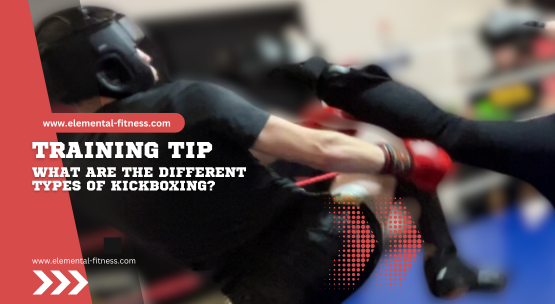
Exploring the Different Types of Kickboxing
Training Offered
- Join Today
- Our Personal Trainers
- Face To Face Personal Training Leeds
- Your First Session
- Online Training Leeds
- Remote Personal Training Leeds
- Ladies Kickboxing Leeds
- Under 18S Fitness Leeds
- School Programmes
- Corporate Team Events
- Gym Space Hire Leeds
- Treatment & Therapy Hire
- Gym Access
- Covid-19 Rehabilitation
- Low Back Pain Treatment
- Boot Camps Leeds
- Food Intake & Nutrition
- Kickboxing Classes Leeds
- Personal Training Leeds Faqs
28
Sept
Exploring the Different Types of Kickboxing
By: Elemental Fitness Leeds personaltrainerleeds, elementalfitnessleeds, kickboxingleeds

Exploring the Different Types of Kickboxing
Kickboxing is a dynamic and exciting sport that has gained popularity around the world. With various styles and techniques, each type of kickboxing offers unique benefits and challenges. Whether you're a beginner or an experienced fighter, understanding the different forms of kickboxing can help you choose the right path for your training. In this post, we’ll explore some of the most popular types of kickboxing.
American Kickboxing
American kickboxing emerged in the United States during the 1970s and combines traditional martial arts techniques, particularly karate, with boxing. This style typically allows punches and kicks above the waist but often prohibits knee strikes and kicks below the belt. American kickboxing emphasizes point fighting, where matches are judged based on speed, technique, and control. It’s a great starting point for those new to the sport.
Muay Thai
Known as the "Art of Eight Limbs," Muay Thai is a striking martial art that originates from Thailand. It utilises fists, elbows, knees, and shins, making it a highly effective and versatile style. Muay Thai is famous for its clinch fighting and powerful strikes, emphasizing aggression and endurance. Many kickboxers incorporate Muay Thai training into their routines for its effectiveness in striking.
Dutch Kickboxing
Dutch kickboxing, developed in the Netherlands, is a hybrid style that combines techniques from both American kickboxing and Muay Thai. This style allows punches, kicks, knees, and elbows, making it known for its emphasis on aggressive combinations and relentless fighting. Dutch kickboxing has produced numerous champions and is a popular choice for fighters competing in K-1 events.
Savate
Savate, a French style of kickboxing, is distinguished by its incorporation of ballet techniques, emphasizing agility and footwork. Competitors in savate utilize both kicks and punches, but they are required to wear special shoes. This style is known for its finesse and technical skill, making it a unique approach to kickboxing.
Light Contact Kickboxing
Light contact kickboxing offers a more controlled approach to sparring. Similar to full-contact, but with less emphasis on power, points are awarded for controlled strikes. This style is ideal for beginners and younger fighters, providing a safe environment to learn and develop skills.
K-1
K-1 is a style of kickboxing that originated in Japan, known for its spectacular fights and high-level competition. It blends elements from various striking arts, including karate, Muay Thai, and Western boxing. K-1 emphasizes full-contact fighting, focusing on powerful strikes and knockout finishes. Fighters in K-1 can use punches, kicks, knees, and limited clinch fighting, making it an exciting and intense form of kickboxing.
Full-Contact Kickboxing
Full-contact kickboxing allows all strikes above the waist, similar to American kickboxing. This competitive sport focuses heavily on knockout techniques and is scored based on strikes landed and aggression. Full-contact kickboxing demands excellent conditioning and extensive sparring to prepare fighters for the intensity of matches.
Light Contact Kickboxing
Light contact kickboxing offers a more controlled approach to sparring. Similar to full-contact, but with less emphasis on power, points are awarded for controlled strikes. This style is ideal for beginners and younger fighters, providing a safe environment to learn and develop skills.
Each type of kickboxing brings its unique characteristics and benefits to the table. Many kickboxers cross-train in multiple disciplines to enhance their skills and versatility in the ring. Whether you’re looking to compete or simply want to improve your fitness, understanding the various styles can help you make an informed choice on your kickboxing journey.
Explore the world of kickboxing, find the style that resonates with you, and unleash your potential in the ring!
How Personal Training in Leeds Can Help
No matter which type of kickboxing you choose, personal training can greatly enhance your skills and help you reach your fitness or competitive goals faster. With tailored one-on-one sessions, personal trainers in Leeds can provide customized workouts, focusing on your individual strengths, weaknesses, and desired outcomes. Whether you're a beginner looking to grasp the fundamentals or an experienced fighter wanting to fine-tune your technique, personal training offers invaluable guidance.
In addition to kickboxing skills, personal training can also help with general fitness, strength, conditioning, and even nutrition. Working with a qualified coach who understands your specific needs means you'll benefit from a well-rounded program that improves not only your kickboxing abilities but also your overall health and performance. For those training at Elemental Kickboxing Leeds, our personal trainers bring over 50 years of combined experience, offering expert support in both martial arts and fitness.
So if you're ready to take your kickboxing to the next level, consider personal training in Leeds as a way to maximize your potential!


